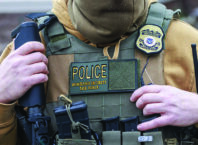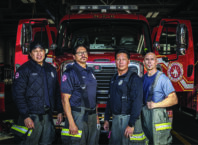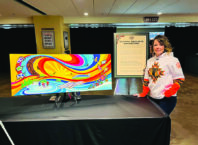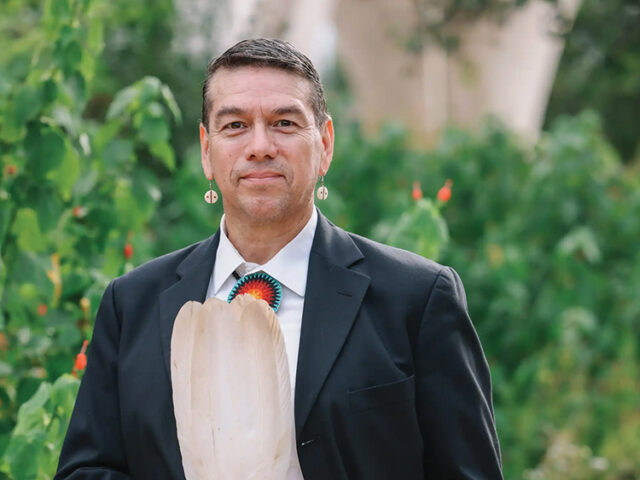
By Nina Moini and Aleesa Kuznetsov/MPR
Native Americans have the highest suicide rate out of any racial and ethnic group in the U.S. Yet there aren’t many screening tools available that are tailored to Indigenous communities. A Bemidji State University professor wants to change that.
Mark Standing Eagle Baez has created the Indigenous SAFE Screening tool, a suicide screening tool specifically for Indigenous people. SAFE stands for Suicide-Assessing-Factors of Event. Baez is a member of the Tap Pilam Coahuiltecan, Mission Indian. He is the co-director of the Indigenous Students in Psychology Training Program at Bemidji State.
Baez spoke to MPR News host Nina Moini about how this tool was created to be culturally sensitive for Indigenous communities.
NINA MOINI: A note to our listeners– this next conversation mentions suicide. Please take care while listening.
Native Americans have the highest suicide rate out of any racial and ethnic group in the US, yet there aren’t many screening tools available that are tailored to Indigenous communities. A Bemidji State University professor wants to change that. Mark Standing Eagle Baez has created the Indigenous safe screening tool, or ISS, a suicide screening tool specifically for Indigenous people. Mark is a member of the Tap Pilam Coahuiltecan, Mission Indian, and is the codirector of the Indigenous Students in Psychology Training program at Bemidji State. Thank you for your time this afternoon, Professor.
MARK STANDING EAGLE BAEZ: Oh, you’re welcome. It’s a pleasure to be here.
NINA MOINI: I wondered about where this idea came from through the work that you do. How did you decide, well, this is a missing tool? This is necessary?
MARK STANDING EAGLE BAEZ: Well, as you previously mentioned, we have the second leading cause of death among our own people. That’s alarming in itself. But knowing that this has been something that has been missing, at least for myself as a practitioner for over 15 years, that we do not have a tool specific for our people. And I knew we needed to change that.
NINA MOINI: And some more statistics here for people, in case they didn’t know, as of 2022, suicide was the second leading cause of death for Native Americans. What have you been hearing from people about this tool? Is it of use right now, or is it being used right now?
MARK STANDING EAGLE BAEZ: It’s taking off faster than I expected. Colleagues and relatives across Indian country and even in Canada, Australia, New Zealand, they want this, like, yesterday. We worked on this as I created– I had an input from a panel of experts, Indigenous majority, Indigenous clinicians, along with non-Indigenous clinicians looking at how we can develop this instrument. So we’ve just recently were able to obtain the content validity.
And we are now going to be looking at the contextual validity essentially to see what we created. Does it say and/or identify what it says it’s going to identify? And we’re looking at our next steps in a pilot study. But as far as the buzzword, it’s off the charts. I’m very excited, very anxious to get this done correctly in hopes that this instrument can be given to individuals across Indian country and others that are servicing Indigenous populations.
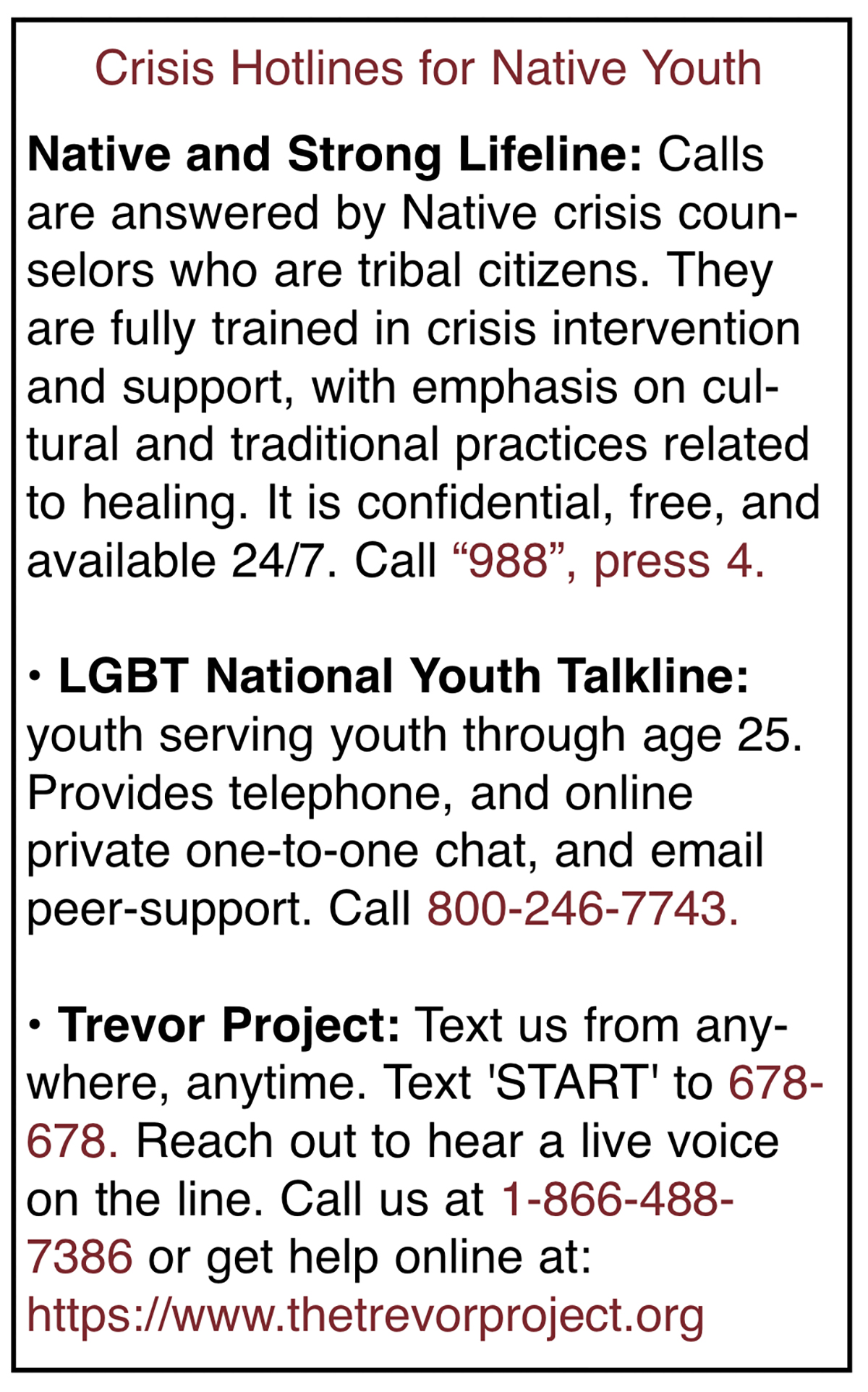
NINA MOINI: Would you tell me a little bit more about what it looks like in practice implementing this tool? Because is it kind of like when you go to the doctor’s office, and there may be a survey of questions, or what does it look like in practice?
STANDING EAGLE BAEZ: Sure. This is a screening tool and almost like a brief assessment, and looking at individuals that would come in, they would be screened to identify any risk factors. This particular tool, as I mentioned, being a clinician for several years, I haven’t used this as a Native clinician. I haven’t seen anything, rather, that would focus and be tailored specific to Indigenous populations. The instruments out there are wonderful in identifying suicidal risk factors and some protective factors, but nothing that I’ve seen that are specific to Indigenous populations.
This is nine questions, and the nine questions not only identifies risk factors but also identifies protective factors. And we look as Indigenous people is grounding in building a meaningful relationship. Well, when we hear screening tool, that doesn’t scream relationality. It’s just let me get the information and move forward. But this tool deeply looks at honoring our people’s experiences and incorporating Indigenous ways of knowing and being.
NINA MOINI: And I wonder too, just with the disproportionality here of the population of Native Americans and this issue of suicide, is this something that you feel like most people you talk to have a connection to? I mean, most people in general do, but this is something that’s impacting a lot of families.
STANDING EAGLE BAEZ: Absolutely. Earlier this morning, I was on the phone with a couple of individuals, and they were looking at instruments that could be incorporated. What was interesting on this phone call is these were two practitioners, one Native and one non-Native. And the one non-Native practitioner is looking at how can I, as a non-Native, incorporate this ISS instrument as a non-Native practitioner working with Indigenous populations.
And that was a key factor in developing something that we are looking at and developing with this ISS tool by not only looking at the practitioner’s perspective as Native and non-Native in hopes that they can disseminate that information to Indigenous clients, regardless of their ethnicity, that they can be professional, be ethical, and be able to be proactive in sharing the instrument.
An elder that I continued to connect with and was supervising this instrument is something is very traditional. A lot of prayer, a lot of well-thought-out positions went into developing this instrument. And yes, I go back to my elders in saying, this is what we’re developing. Well, as Indigenous people, we don’t talk about suicide. So that was a big barrier there is it’s taboo. So how do we help our people? And elders coming together saying it’s important we do need something, like, yesterday, but we do not want to continue to retraumatize.
So we have to look at a more culturally-relevant, more culturally-sensitive, and more culturally-appropriate words that honors our people and connecting with the elders and saying, no, this doesn’t look right. No, change this. Change that. And then, working with the panel of experts, it took a whole lot longer than expected, but life is worth it. And continuing to incorporate not only our Indigenous ways in making decisions when we process, but we want to make sure that we do it the right way as professionals when we’re working with humanity.
NINA MOINI: Yeah, oftentimes, things that are done with intentionality and nuance do take longer. And depending on different cultures, people talk about this issue or don’t talk about this issue in different ways. Can you say a little bit more about why or how it’s taboo within the different cultures and how, maybe, the elders helped to get not around some of that but to face it?
STANDING EAGLE BAEZ: We all know that there’s a problem with suicide among our people, and we want to make sure that we are more proactive than reactive. We believe our people– I should say, some of us have this understanding is if we speak it, we’re putting that energy out, that spirit out. And if it’s something negative, we can be calling on that energy. So if we continue to talk about death, we continue to talk about suicide, we can actually be invoking that spirit.
So when speaking to our elders, they realize and understand there is a serious problem and need to address life. And how can we honor life? So it wasn’t anything new that I developed. It’s listening to our elders saying, we have these words. How do we honor who that person is in front of you and empower them, motivate them, share with them our medicine ways, come in a good way, and also address some areas of need of when they thought about taking or thinking about taking one’s life?
So in this instrument, there’s no mention of the word, literally, “death” or “kill.” Some instruments that are out there, first question presented is if you wish you were dead. If I don’t know you and you’re coming into my office and I’m trying to build a relationship, and the first question I’m asking you is, do you want to be dead? The client’s more likely going to say, no, I don’t want to kill myself. One, I don’t even know you.. Number two, you don’t want to build a conversation of this topic that is so sensitive that it’s really difficult to speak.
So the ISS really provides these cultural steps and components in ways that we can bring honesty and honor who they are and hoping that we identify those risk factors, in addition to identifying cultural support factors to help the client when they leave that office.
NINA MOINI: I have in my notes here that the first question is, tell us what you enjoy about life or living. So that’s interesting, that nuanced, more– an approach with more care when there’s so much vulnerability involved. I want to know, before I let you go, Mark, just what is next. So you’re doing a pilot study. What will that look like?
STANDING EAGLE BAEZ: Yes. I’ve had several agencies contact me because they want in. There’s a serious need. So the steps that we’re happening right now is we’re contacting and making our connections with those agencies, those facilities. I am currently working on the IRB, which is the Institutional Review Board, making sure that everything is done professionally, ethically in this study, that it’s in a positive and a professional approach. And we are also looking at how we can begin to develop these relationships.
And so, from here, we’re going to start out with a small pilot study with near agencies, and then we want to have a larger pilot study where we can incorporate tribes throughout the United States.
NINA MOINI: All right, if all goes as planned, when would you hope it would be widely available?
STANDING EAGLE BAEZ: We’re hoping to finish up this first round of by the end of December, early January, and then open it up to a larger study. So I’m hoping this time next year would be the latest. But yes, we’re trying to work as fast but as professional as possible.
NINA MOINI: Sure. Mark, thank you for your work and for sharing it with us. Appreciate your time.
STANDING EAGLE BAEZ: Oh, [NON-ENGLISH], thank you. Thank you very much.
NINA MOINI: Thank you. Mark Standing Eagle Baez is an assistant professor of counseling and clinical psychology at Bemidji State University. If you or someone you is struggling, help is available. Call or text 988 to get connected with trained counselors. The 988 Suicide and Crisis Lifeline is available 24/7.
Minnesota Public Radio can be found online.


